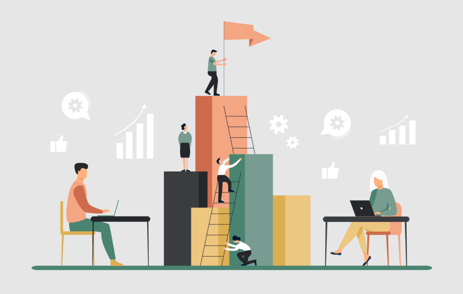As we enter 2021 and look back on the disastrous year we’ve had, I can’t help but wonder: If we had been able to predict some of these events — would things be different?
Last week, Sidecar members wrapped up our Strategic Foresight Sprint, a member-exclusive series in which we learned together about how to forecast trends before they even happen, something we could all use as we look ahead to the changes the new year will bring.
When we say strategic foresight, we mean the capacity to look at the future and spot emerging trends so we can proactively address them — either by preparing for the disruptions they will bring or by orienting yourself to be in the best possible position to take advantage of these trends. It is through using strategic foresight, and the other insights shared by “Introduction to Strategic Foresight” creator Seth Kahan, that organizations have the ability to successfully predict and prepare for what’s coming next.
The importance of strategic foresight is becoming much clearer as we approach what is bound to be a very long recovery from the COVID-19 pandemic. Utilizing the insights from Kahan’s course, your organization can predict and proactively react to what’s coming next.
When asked what he wanted the biggest takeaway from his course to be, Kahan responded, “Keeping an eye on the future so that you don’t get caught up in the present and miss something big that’s coming your way.”
How can your organization do this?
Start by looking for your key indicators: What is the likelihood and speed of something happening? Then check out Google Alerts, monthly reports, newscasts, specialized thought leaders and other trusted sources. Kahan uses these tools for monitoring potential new trends and staying up to date on industry news.
He also emphasized the importance of talking with other industry professionals. Ask them about their concerns, what’s exciting them, upcoming opportunities, their biggest challenges and even who they go to for leadership in their industry.
Once you build up a repertoire of trusted sources, locating upcoming trends that could affect your organization should be easy. The next step is knowing what to do about it, because identifying trends of the future is just the beginning, the next steps are up to you.
Interested in learning more about our Strategic Foresight course? Members have access to this and a full library of courses, plus access to our video archive of workshops and panel discussions, and so much more. Start learning now. Join here.

December 21, 2020


